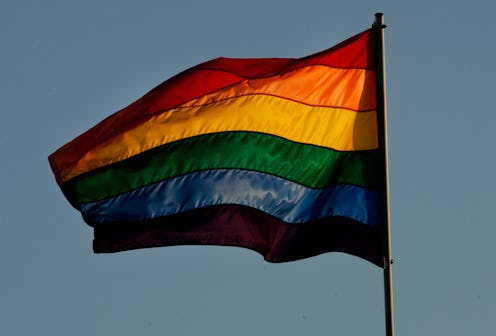Life
This Newspaper Graphic Didn't Go Over Well With LGBTQ Readers

People may disagree on the finer points of what it means to be healthy, but some things are obviously bad for you: alcohol abuse, eating several dozen chicken nuggets in one fell swoop (a behavior of which I'm certainly not guilty), and so on. According to an Australian newspaper graphic, being LGBTQ should be added to that list. This has gone over with readers — particularly those whose identities were lumped together with substance abuse and psychological distress — exactly as well as you would imagine. In other words, people are less than stoked about it.
On Wednesday, the Daily Telegraph published an article analyzing the results of a new report from the New South Wales government. The report looked at factors like eating habits and substance use contributing to a “health crisis” facing young Australians currently. Like many such studies, it included information about sexuality. The Telegraph’s article isn’t especially noteworthy, but the accompanying graphic has sparked a firestorm of outrage online.
Underneath the blaring headline, “Fat Chance of Being Healthy,” the illustration lists the percentage of LGBTQ high school students in Australia alongside statistics about illegal drug use and obesity. That’s it — there’s no information about their mental health, safe sex practices, or anything that would make their sexuality relevant. Basically, it appears to suggest that same-sex attraction is unhealthy.
The graphic's implications didn't slip by readers, who quickly voiced their criticisms on social media. Many pointed out that it could leave a lasting impact on young readers experiencing same-sex attraction, and others suggested complaining to the Daily Telegraph about the infographic. Catherine King, the Shadow Minister for Health and Medicare, even joined in, calling the graphic "unacceptable and ill-informed."
The newspaper's editor, Christopher Dore, soon released a statement claiming that the headline "clearly referred to the health issue of obesity." "Unfortunately the presentation of the story has been misinterpreted," he said.
To be fair, the story doesn't claim that same-sex attraction is unhealthy, but the graphic is rather less clear. Fortunately, despite its implications, queer Australians seem to be doing just fine.
Naturally, all this leaves the LGBTQ community with a pressing question: If same-sex attraction is a possible health hazard, are we allowed to call in queer to work? Inquiring minds want to know.